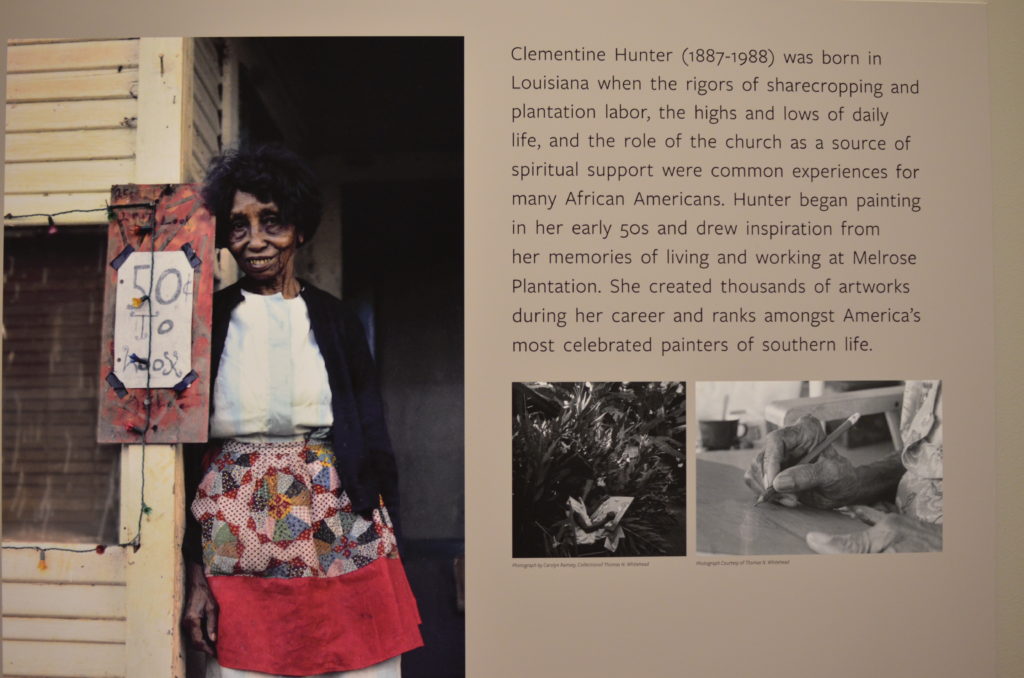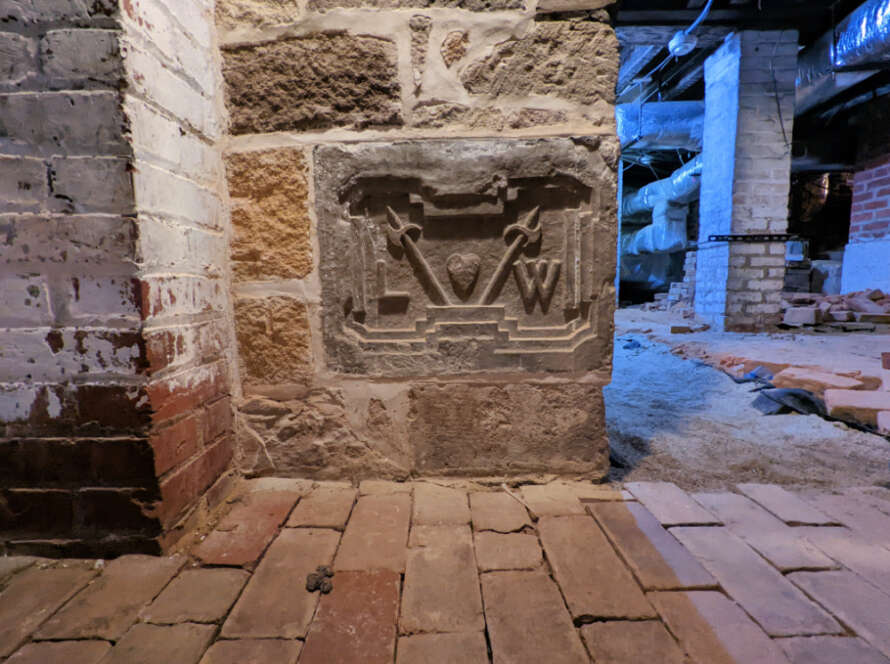Like the artist herself, the exhibit at the National Museum of African American History and Culture is small and unassuming. There are only thirteen painting on three walls, even though Clementine painted thousands in her lifetime. The point, however, is not to flood you with information and art, but to allow the simple life in her painting to shine through.
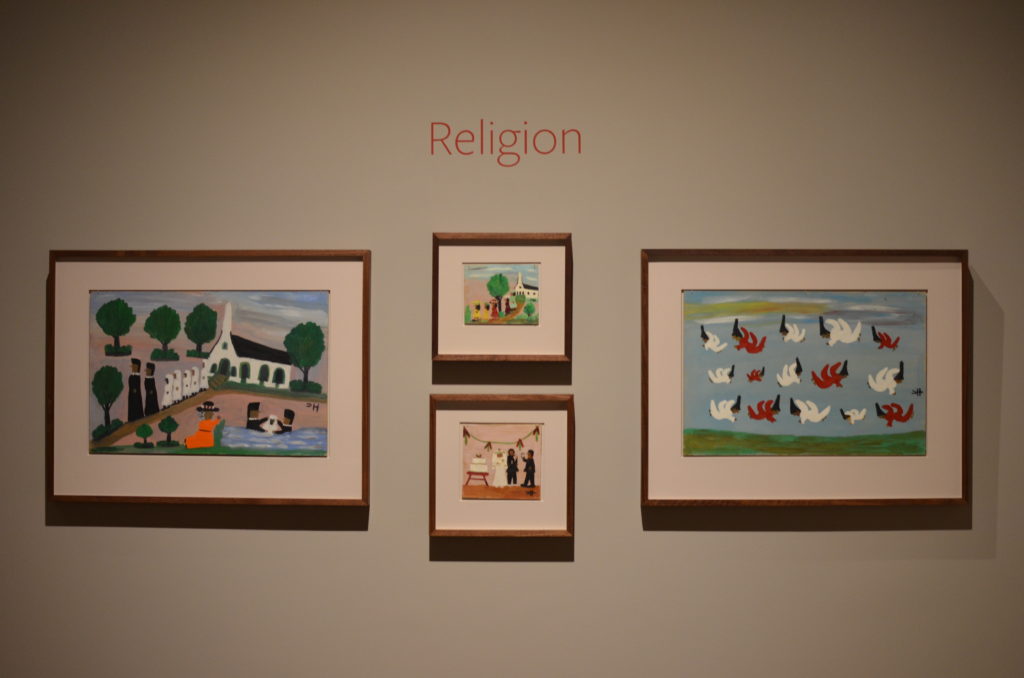
The senior conservator, Jia-Sun Tsang, explained how she and her team deliberately left lots of open space between the paintings and the frame, unlike early attempts which made it feel closed in. This lets the view see the rough, uneven edges of the artwork to show through, as well as the occasional fingerprint. Clementine Hunter’s work is uniquely simplistic and they wanted to let that be seen. Most of her “canvasses” were actually made from cardboard or wood that she found, even a window-shade in one case.
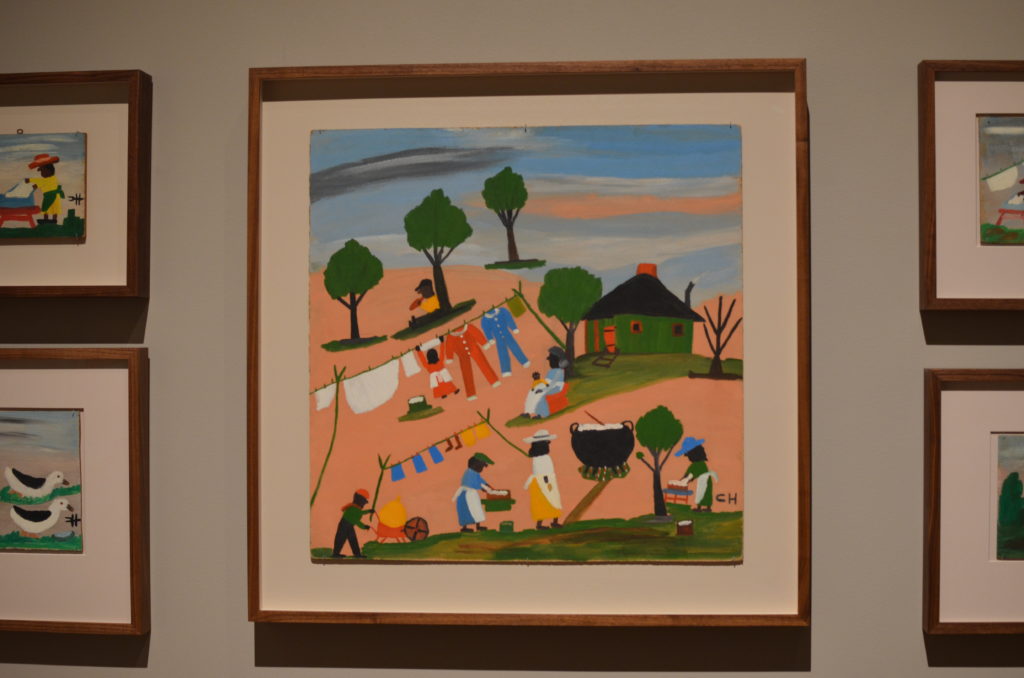
Clementine was born in 1887 in Louisiana. She was illiterate and preferred working in the fields to going to school. She lived on Melrose Plantation, where her father was a sharecropper, most of her life. But the coolest things about her? She was a self-taught artist, she didn’t start painting until she was in her fifties, and she was one of the first African Americans to have an art show in New Orleans.
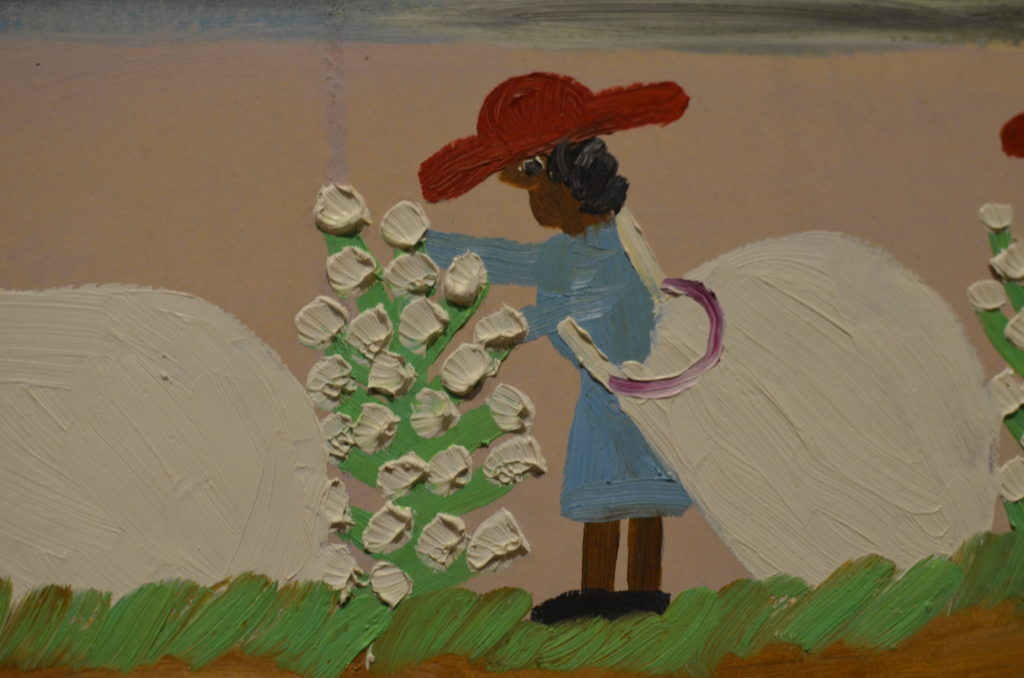
Even though the exhibit, hidden away at the back of the other art, might be hard to find, it’s well worth the fifteen minutes it takes to go through and enjoy her paintings, showing all the activities on the plantation, from visiting church to getting married to picking cotton. Anyone can enjoy it and reminds us all that we don’t have to paint like Rembrandt for people to enjoy our work. The exhibit will be on display until next year.
